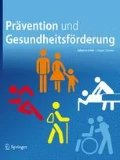Zusammenfassung
Hintergrund
Der Eintrag von Antibiotika in das Abwassersystem ist unvermeidbar, sodass die schadlose Ableitung bis zur Abwasserreinigungsanlage sowohl im Trocken- als auch Regenwetterfall gewährleistet sein muss. Aufgrund des Überschreitens der hydraulischen Kapazität des Kanalnetzes kann es jedoch dazu kommen, dass überschüssiges Mischwasser, welches belastet mit Schadstoffen ist, abgeschlagen werden muss. Entsprechende Maßnahmen müssen vorgehalten werden, um den Stoffeintrag in das Gewässer zu reduzieren.
Methoden
Der Zulauf zum Abwasserpumpwerk Stetzsch (im Einzugsgebiet der Briesnitz innerhalb der Stadt Dresden) wurde als Untersuchungs-Standpunkt gewählt. Dabei wurden die im Abwasser vorhandenen Antibiotikafrachten über automatisierte Probenehmer (Abwasserqualität) und mobile Durchflussmessgeräte (Abwasserquantität) ermittelt. Die labortechnische Analyse hinsichtlich der Antibiotikakonzentrationen wurde von der Medizinischen Fakultät der Technischen Universität durchgeführt. Im weiteren Verlauf des Projektes wurde vor dem Abwasserpumpwerk Stetzsch, eine Online-Messstation installiert, um die Dynamik des Wasser- und Stofftransports genauer analysieren zu können.
Ergebnisse und Diskussion
Im Fall von Regenereignissen kann eine erhöhte Fracht an Schmutz- und anhängenden Schadstoffen im vorderen Teil der abfließenden Welle (Wellenausstoßeffekt) beobachtet werden. Im Entlastungsfall entsteht daher ein Umweltrisiko für das Ökosystem im angrenzenden Oberflächengewässer. Die Kombination aus erhöhter Schadstoffbelastung im vorderen Teil der Welle, der Eigenschaft, dass die Antibiotika nicht oder nur schwer biologisch abbaubar sind und dass die im Abwasser vorzufindenden Antibiotika-Konzentrationen temporär höher als die zulässigen PNEC-Werte sind, ergibt, dass Entlastungen zu vermeiden bzw. ihre Intensität zu verringern sind.
Schlussfolgerung
Aufgrund der aufgeführten Faktoren ist es erforderlich, technologisch und wirtschaftlich effiziente Maßnahmen, wie z. B. die Schaffung von Rückhalteräumen (Speicherbecken) sowie die Implementierung einer Kanalnetzsteuerung umzusetzen, sodass einerseits die Abflusssicherheit gewährleistet und andererseits der Umwelteinfluss minimal gehalten wird.
Abstract
Background
Excreting antibiotics in the sanitary system is unavoidable, caused by the metabolism of the human body and the characteristics of antibiotics itself. Therefore we have to ensure drainage safety starting from the input in the sewer system until the wastewater treatment plant for both cases, dry- and rain weather. The hydraulic capacity of the drainage system is however limited during extreme rainfall events. In this particular case, polluted excess water (including micro pollutants) may be directly discharged into the adjacent surface water body via combined sewer overflow structures. Hence, it is necessary to minimize this impact with appropriate arrangements.
Methods
The focus of our analysis was put on a sampling point near a main pumping station in the catchment area of Briesnitz of the city of Dresden. The loads of antibiotics within the sewage was estimated through field sampling using an automatic sampler and mobile flow sensors. The laboratory analysis was accomplished by the medicine faculty of Technische Universität Dresden. In the course of the analysis we installed an online monitoring station, to allow a better monitoring of flow and pollutant dynamics during the dry and wet weather conditions.
Results
The occurrence of high pollutant loads within the frontal part of the wave (‘first flush phenomenon’) was observed during online measurements. Due to low bio-degradability of antibiotics and the fact that antibiotic-concentrations within sewage temporarily exceed PNEC-values, it is important to minimize discharges into surface waters to protect the adjacent aquatic ecosystem.
Conclusion
Driven by these aspects it is necessary to implement technically and economically efficient arrangements, e.g. constructing in-sewer retention tanks or implement an online control system to ensure drainage safety with a minimum environmental impact.




Literatur
AbwV (2013) Verordnung über Anforderungen an das Einleiten von Abwasser in Gewässer. Bundesrepubik Deutschland
Al-Ahmad A, Daschner FD, Kummerer K (1999) Biodegradability of cefotiam, ciprofloxacin, meropenem, penicillin G, and sulfamethoxazole and inhibition of waste water bacteria. Arch Environ Contam Toxicol 37:158–163
Alexy R, Kumpel T, Kummerer K (2004) Assessment of degradation of 18 antibiotics in the Closed Bottle test. Chemosphere 57:505–512
Bergmann A., Fohrmann R., Weber F.-A. (2011) Zusammenstellung von Monitoringdaten zu Umweltkonzentrationen von Arzneimitteln. Umweltforschungsplan des Bundesministeriums für Umwelt – Naturschutz und Reaktorsicherheit
Bertrand-Krajewski J.L., Chebbo G., Saget A. (1998) Distribution of pollutant mass vs volume in stormwater discharges and the first flush phenomenon. Water Res 32:2341–2356
European Commission (2003) Technical guidance document on risk assessment – part II. Institute for Health and Consumer Protection (Hrsg.)
Hanisch B, Abbas B, Kratz W (2002) Gefährdungspotential für die aquatische Lebensgemeinschaft – Ein Bewertungsansatz. Landesumweltamt Brandenburg
Kaeseberg T, Blumensaat F, Zhang J, Krebs P (2014) Assessing antibiotic resistance of microorganisms in sanitary sewage. In: 13th International Conference on urban drainage 2014, International Water Association, Kuching, Sarawak, Malaysian Borneo
Kaeseberg T, Hutka L, Bernard L, Tränckner J, Krebs P (2013) Antibiotika-Monitoring im Abwasser zur Verifizierung eines Eintrags- und Transportmodells am Beispiel der Stadt Dresden. In: DWA-Tagung GIS & GDI in der Wasserwirtschaft. DWA, Kassel
Krebs P, Holzer P, Huisman JL, Rauch W (1999) First flush of dissolved compounds. Water Sci Technol 39: 55–62
Kuemmerer K (2009) Antibiotics in the aquatic environment – a review – part II. Chemosphere 75:435–441
Kümmerer K, Alexy R, Hüttig J, Schöll A (2004) Standardized tests fail to assess the effects of antibiotics on environmental bacteria. Water Res 38:2111–2116
Kummerer K, Henninger A (2003) Promoting resistance by the emission of antibiotics from hospitals and households into effluent. Clin Microbiol Infect 9:1203–1214
Miller C, Thomsen LE, Gaggero C, Mosseri R, Ingmer H, Cohen SN (2004) SOS response induction by beta-lactams and bacterial defense against antibiotic lethality. Science 305:1629–1631
Ort C, Lawrence MG, Reungoat J, Eaglesham G, Carter S, Keller J (2010) Determining the fraction of pharmaceutical residues in wastewater originating from a hospital. Water Res 44:605–615
Einhaltung ethischer Richtlinien
Interessenkonflikt
Es besteht kein Interessenkonflikt.
Author information
Authors and Affiliations
Corresponding author
Rights and permissions
About this article
Cite this article
Kaeseberg, T., Blumensaat, F., Zhang, J. et al. Spülstoßeffekt gelöster und feststoffgebundener Antibiotika und resultierendes Umweltrisiko bei Mischwasserentlastungen. Präv Gesundheitsf 9, 206–210 (2014). https://doi.org/10.1007/s11553-014-0450-5
Published:
Issue Date:
DOI: https://doi.org/10.1007/s11553-014-0450-5

